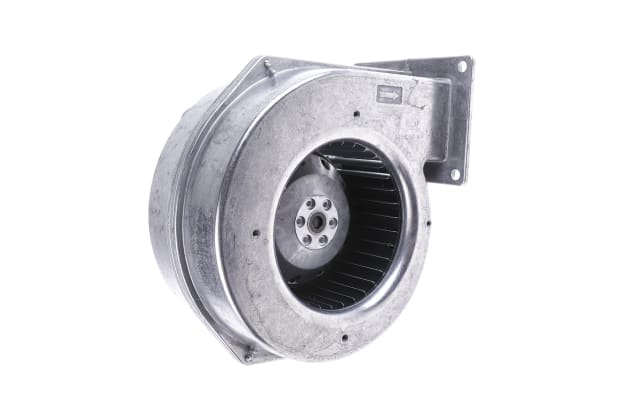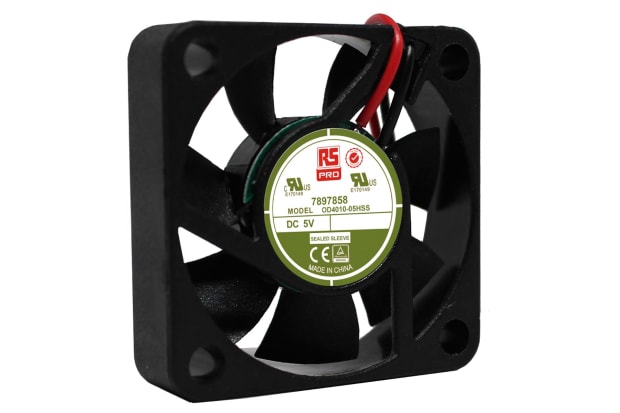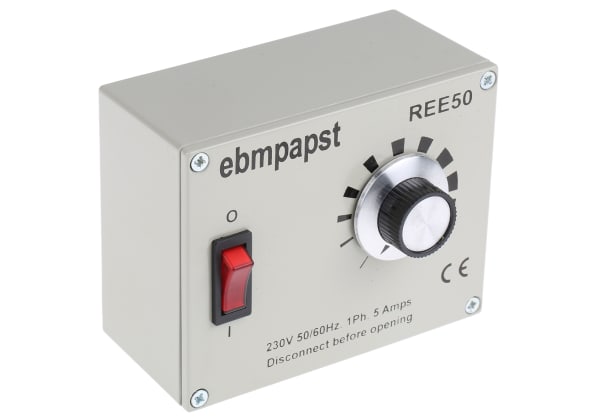- Published 23 Apr 2023
- Last Modified 27 Nov 2023
- 5 min
Centrifugal Fans vs Axial Fans: What is the Difference?
For cooling and ventilation, centrifugal and axial fans are two industrial options.

Fans are everywhere, used in nearly everything - whether to keep cool or to warm up. From everyday use to complex computers, fans are essential, but what’s the difference between centrifugal and axial?
What are Centrifugal Fans?

Centrifugal fans, also known as blowers, are equipped with a motor that is designed to pull in air from the surrounding environment and push out cold air. They are a reliable technology due to their adaptability and low maintenance, making them popular in both commercial and household settings. The application of centrifugal fans varies, including their use in air conditioning, computer cooling and within dryers at car washes. They are a popular design for having high static efficiency, producing air flow at a consistent level.
There are several types of centrifugal fans including backwards-curved, forward-curved, and inline centrifugal fans. These fans primarily differ based on the angle of their blades, and their airflow output.
How Centrifugal Fans Work
The centrifugal fan’s design is straightforward. The wheel called the impeller, is powered by an electric motor. The impeller spinning around pulls in the air and blows it out. How much air it pulls through is decided based on the turning power of the electric motor.
A centrifugal fan’s mechanism is protected in a casing, known as a housing. However, whilst the fundamental design is simple, the angling of the blades within the centrifugal fan determines its fan type.
- Backwards curved centrifugal fans have blades that curve in the opposite direction to the impeller. Their casings are also heavier as these fans run at higher speeds
- Forward-curved fans have blades that are angled in the same direction as the impeller. Whilst having a lower output, they are quieter when in operation
- Finally, inline fans are smaller-sized fans with a higher output. These are more commonly used as industrial fans
What are Axial Fans?

Axial fans have a lengthy history and originate from medieval windmill design before the addition of an electric motor in the 1800s. Axial fans have a low-pressure output and can come in varying sizes. Axial fans can be used in ventilation, cooling machinery and rooms. They are also used in hovercrafts, generators, and compression equipment. They are present in commercial and domestic settings. Like a centrifugal fan, the axial fan’s fan wheel and the motor are encased in a housing.
How Axial Fans Work
Like centrifugal fans, axial fans draw in and push out air from a rotating fan wheel. The blades on an axial fan are parallel to the axis, which means air flows in and out of the fan in the same direction. Whilst the axial fan’s design creates a substantial amount of airflow; the position of the fan blades in an axial fan means that the pressure of the airflow is low.
What are the Similarities Between Centrifugal and Axial Fans?
There are a lot of similarities between these two fan designs - simplicity being one of them. Both have a simple design method, making both reliable and durable technology. Additionally, both use electric motors to make their design functional.
Also, both fan designs have different options to choose from. Centrifugal fans have different blade positionings, providing different outputs, based on need and purpose. Axial fans come in different sizes and similarly to centrifugal fans, also come in different speed options.
Finally, both fans have numerous applications in both household and commercial settings. Examples of their use include machinery, air conditioning and cooling units.
How Do Centrifugal and Axial Fans Differ?
The biggest difference between centrifugal and axial fans is their blade angle. A centrifugal fan will have blades angled in different directions for different flow and pressure purposes. Centrifugal fans can produce a high-pressure airflow, based on how the fan blades are angled. Adversely, the blades of an axial fan are in line with the axis, which provides a larger, low-pressure airflow.
Furthermore, axial fans tend to be lighter than centrifugal fans, due to the low-pressure output. Centrifugal fans, especially backwards curved fans, have higher air pressure, making them heavier with a more robust housing. Even more so, axial fans’ lighter smaller build means that in some cases, they are cheaper than centrifugal fans.
Finally, the design of an axial fan means that they are a lot noisier than centrifugal fans. Depending on size and application, some axial fans require silencers to dull the noise they create. This differs from centrifugal fans, which are a lot quieter and have no need for any noise-reducing equipment.
Centrifugal and Axial Fans: Which Option is Best?
Choosing between the two fans is dependent on the task or project at hand. Considerations include the size of the space you need to cool. If you have a larger space, a centrifugal fan may be a better choice, as its output pressure is greater and can force air to circulate at a greater distance. However, if the space needing to be cooled is smaller, then an axial fan may be a better choice, as the airflow does not need as much pressure behind it to force the air at a further distance.
Another point to consider is the size of the fan you need. Whilst both fan types come in varying sizes, the axial fan produces a lot more noise and so a centrifugal fan may be the better choice. However, axial fans are usually lighter units compared to centrifugal fans.
An axial may be a wiser choice if you are housing a unit in a weaker infrastructure, or in machinery that needs to be movable. Even more so, if the power supply is weak, then an axial fan may be more appropriate due to its low-pressure output. A centrifugal fan requires more input of power for a high-pressure airflow.
Finally, another attribute that needs to be considered is budget. If you have a limited budget to work with, then axial fans are the most cost-effective solution. They are as reliable as centrifugal fans, but their lighter weight and lower energy needs mean that they are cheaper to purchase and maintain.
Further Reading
Related links
- Centrifugal Fans - A Complete Guide
- Centrifugal Fans
- AC centrifugal fan
- RS PRO Centrifugal Fan 33cfm 97mm
- ebm-papst D2E 097 Series Centrifugal Fan AC Operation
- ebm-papst D3G133 Series Centrifugal Fan
- Sanyo Denki San Ace C150 Series Centrifugal Fan 135cfm 150 x 150 x 35mm
- ebm-papst R2E220 Series Centrifugal Fan AC Operation, 221.4 (Dia.) x 71 Dmm


